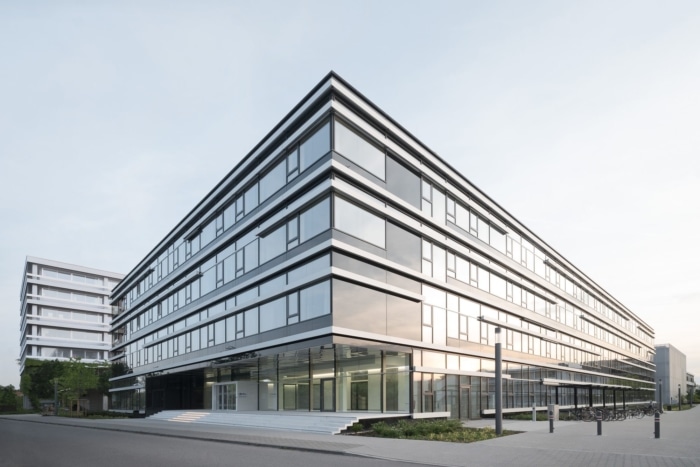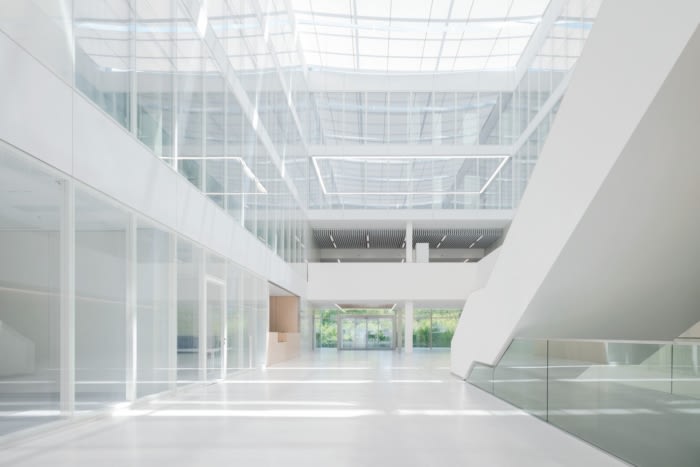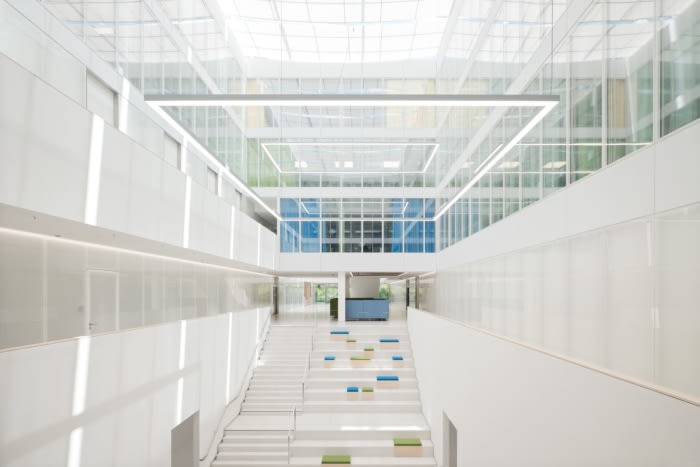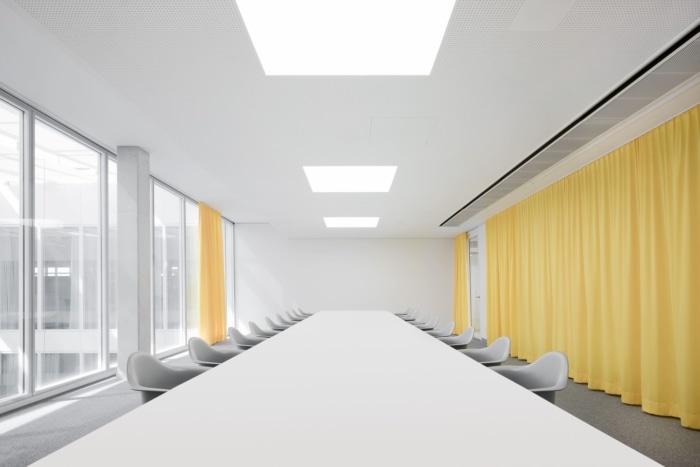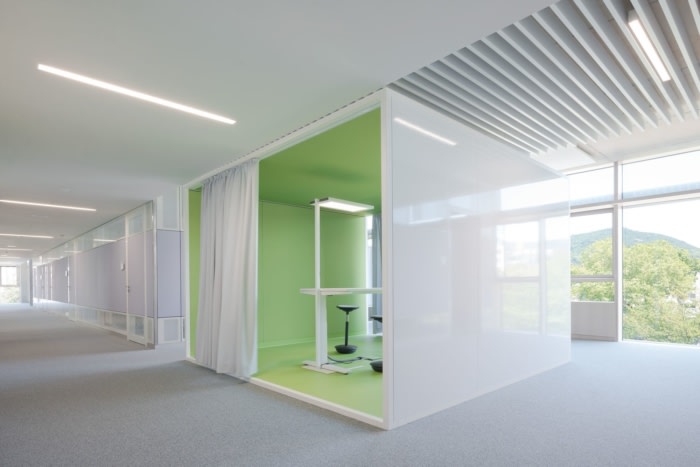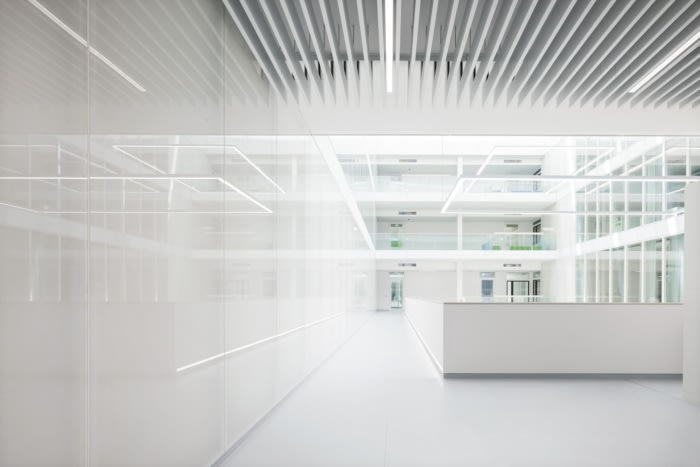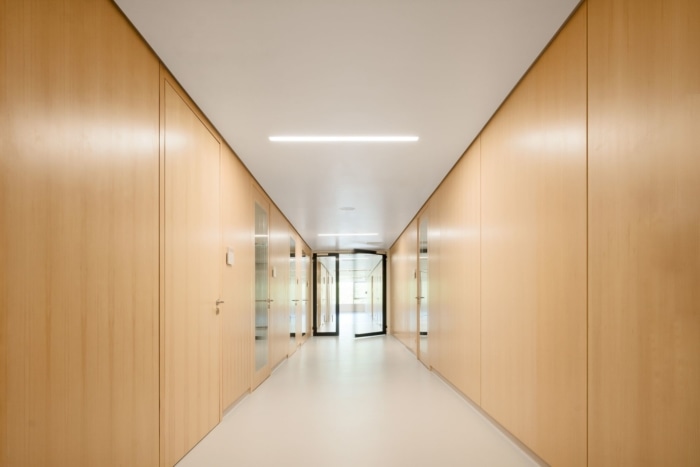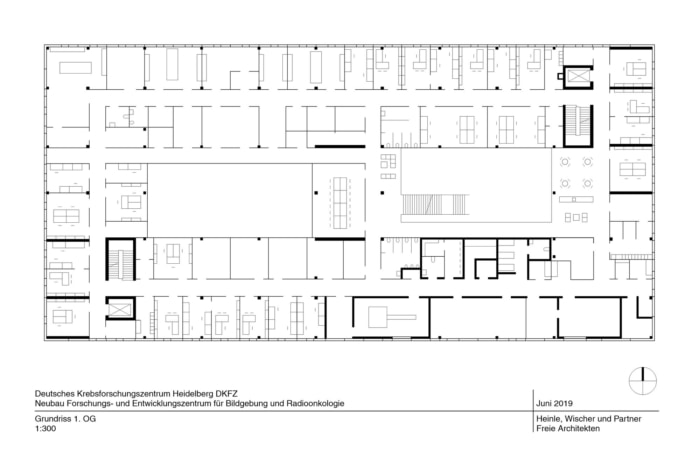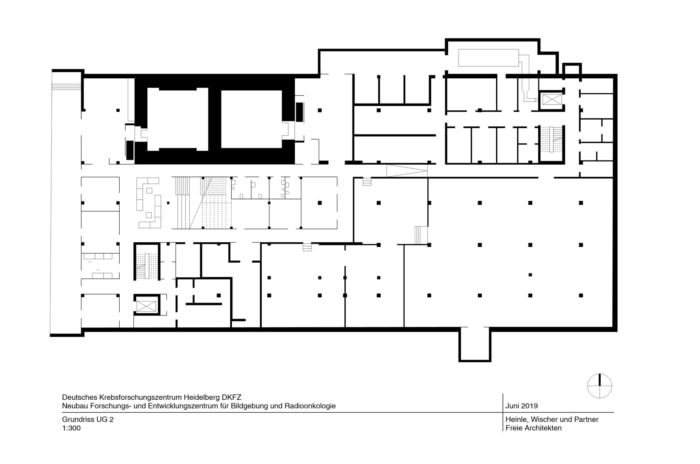German Cancer Research Center – Research and Development Centre for Imaging and Radiation Oncology
Heinle, Wischer und Partner and Freie Architekten worked together to design a pristine environment to end cancer at German Cancer Research Center’s Research and Development Centre for Imaging and Radiation Oncology in Heidelberg, Germany.
A future without cancer – this vision drives the researchers at the German Cancer Research Center. They are working towards a better understanding of the disease to achieve a more effective treatment. They use the most advanced diagnostic techniques and treatment methods that are developed at the Research Centre itself. The use of artificial intelligence also breaks new ground in the creation of diagnostics and image and data evaluation.
The new Research and Development Centre for Imaging and Radiation Oncology offers space to this vision, turning to reality the direct link between research, diagnosis and treatment. This also means that in one building, the heterogeneous demands of research, work and the treatment of patients have been brought together with those of the technology concerned, which is affected by radiation. The result is a fittingly representative building, which reflects the precision of the scientists and which conveys accessibility, clear direction and transparency to the visitor by means of its bright atria.
The six-storey building – including two lower floors – is divided by two large atria, which are connected at ground floor level. Beginning at the main entrance, visitors are led in this way to the treatment areas for patients in the rear part of the building. There the entrance area merges into a broad staircase with seating steps, which leads to the second basement floor. Daylight reaches the lower floors through the atria and ensure accessibility, orientation and transparency.
The dynamic development in the field of radiological research demands a flexible and future-oriented building structure, which can adapt to technical and structural innovations. In cutting-edge research this also applies to the large-scale equipment, weighing tons, that needs to be replaced every few years. The solution in construction terms is a façade made of large pre-fabricated elements which in part can be opened. It thus permits direct access to the machines via the exterior wall and replacements to be undertaken without interruption to the in-house research activity. Further opportunities allowing reaction to developments in research are given to the user by means of areas that are variable in their usage – for example, the atrium staircase, which can be also utilised as an auditorium – or through flexible facilities for the open plan offices.
Architect: Heinle, Wischer und Partner and Freie Architekten
Design Team: Hanno Chef-Hendriks, Andreas Braun, Anika Koenig, Nicole Hegendorf, Claudia Wohlfrom, Ajla Pašic, Gabriel López Custode, Cornelia Oesterle-Eisenbraun, Arta Muciqi
Photography: Brigida González


